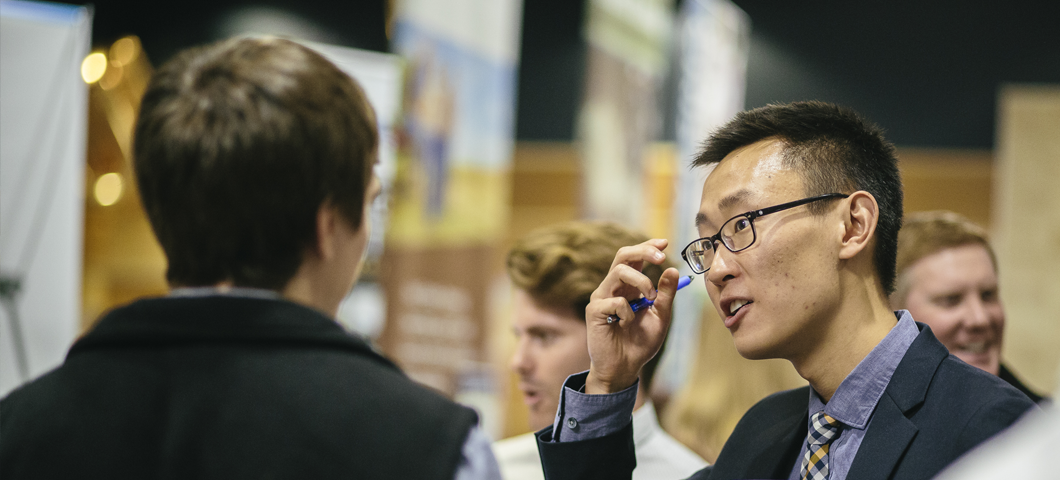Employment
Introduction
International students who maintain legal status under the regulations set forth by the U.S. government can generally be allowed to work for wages on campus. Permission to work off campus may also be a potential for the purpose of practical training and in a small number of other situations. Students must always check with an International Student Advisorin the Office of International Programs (OIP).
CPT is a benefit for F-1 students that must be "an integral part of an established curriculum" that grants permission to work off campus per compliance guidelines.
An F-1 student, may qualify for optional practical training which allows the student to engage in temporary employment to gain practical experience in his or her field of study.
A guide that explains the process of applying for OPT for an F01 student to engage in temporary employment to gain practical experience in his or her field of study.
Students who are currently on OPT and who graduated with a qualifying degree in a STEM major (Science, Technology, Engineering, Math) may be eligible to apply for an additional 24-month extension of their OPT.
A guide for students currently on OPT, in a STEM field, who may be eligible to apply for an additional 24-month extension of their OPT.
Academic Training is permission to work anywhere in the U.S. for training purposes granted to Exchange students in good J-1 standing. This allows them to remain in the U.S. after their program of studies ends.
On-Campus Employment
On-campus employment is widely available; on-campus employers are aware of the need to allow students some flexibility to work around class schedules. Students are permitted to work up to 20-hours per week in most cases during the academic year, and more than 20-hours per week during vacation periods between semesters. Pay starts at approximately US$10.30 per hour, and will vary depending on the department and the job responsibilities. Pay checks are issued twice per month on alternating Wednesdays; some taxes will be withheld from each paycheck, but students will often be eligible for a full or partial tax refund at the end of the tax year.
To Find a Job
Students should visit the website for the Allen Yarnell Center for Student Success (AYCSS) to connect with an MSU career coach, search for available employment opportunities on the HireABobcat site, and peruse other employment related resources. AYCSS is located in the lower level of the Strand Union Building (SUB)
To verify the suitability of a particular job, please maintain close communication with your OIP International Student Advisor.
Other Ways to Find an On-Campus Job Include
-
asking professors or others in the student's major department about possibilities,
-
talking with other students to find out about job opportunities,
- contacting some of the key employers on campus directly:
- Food Services Office (Miller Dining Hall, Rendezvous Dining Hall, Union Food Market, etc.)
- Residence Halls
- Renne Library
- Family & Graduate Housing
- Conferences Services
- Potato Lab
- Various departments and laboratories
First-Ever Jobs
First jobs are often found in a service position, but as a student gains experience and knowledge about the opportunities on campus, jobs can often be found that relate more closely to the student's area of study and that can be useful to include on a resume. Highly motivated undergraduate students can sometimes find paid positions as part of a research project. Graduate students may be offered teaching assistantships (GTAs) or research assistantships (GRAs) in their primary academic department.
Employers
Employers will provide training for student employees and outline their expectations for the job. Employers must follow fair practices and treat employees equally. Student employees are well-advised to arrive to work on-time, notify the employer in advance if illness or some other situation prevents them from working as scheduled, follow rules and regulations, and work to fulfill the responsibilities of the job. Building a reputation as a "good worker" is useful in gaining better positions and positive referrals.
Social Security Number
In order to apply for a Social Security Number (SSN), F-1 and J-1 students must first secure a job and have a letter of employment. They must then visit the Human Resources Office of International Tax Compliance to complete the appropriate paperwork and receive the permission to apply at the Social Security Administration. This cannot be done any earlier than 10 working days after initial entry to the United States (the date on your I-94).
The student can then apply in person at the Social Security Administration once the paperwork with OIP is complete. Students should make sure tho bring a passport, I-94 card, I-20 or DS-2019, Letter of Employment, and documents prepared at OIP. The Social Security Administration is located at:
3205 North 27th Avenue
Bozeman, MT 59718
Phone: (406) 586-4501 or 1-800-772-1213
Note: The building is located behind the Target Store; by bus, take the blue line, it is the last stop.
The SSN is a very personal number that should be kept private and given only to reliable and safe offices such as an employer, bank, insurance, or doctor's office. Keep your card in a safe place, do not carry it or any other document that shows your SSN.
Note: Canadian citizens cannot use the Canadian SSN as a U.S. SSN. Applying for a SSN can only happen while in the U.S. through the above procedure.

